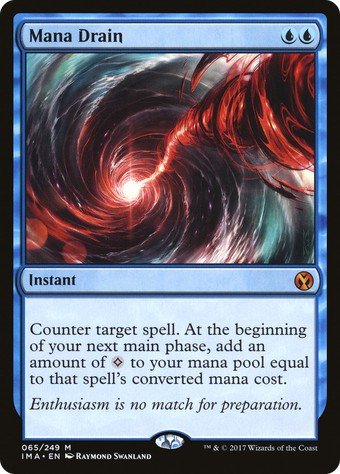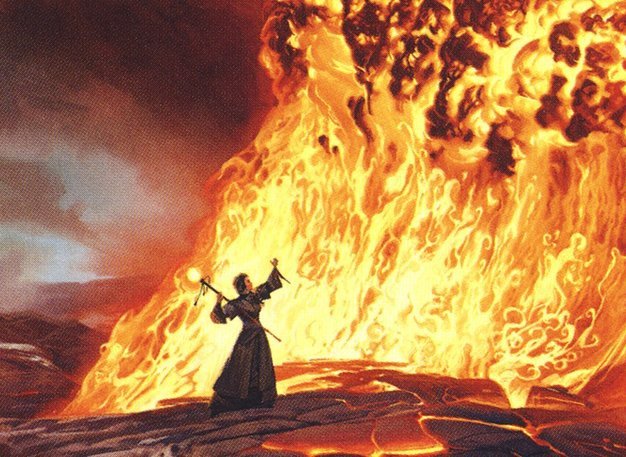TABLE OF CONTENTS
2. Game Scenarios
3. Archetypes
INTRODUCTION
A threat assessment is an evaluation of events that can adversely affect operations and/or specific assets. Historical information is a primary source for threat assessments, including past criminal and terrorist events. A comprehensive threat assessment considers actual, inherent, and potential threats [1]
Naturally, achieving a good level of threat assessment requires deep knowledge of the cEDH format. Magic is a game that rewards good use of limited resources. Decisions that lead a match to victory begin at deck building and go up to the last round of priority. Thesse articles will discuss the decision-making process during the game, but that doesn't mean you don't have to worry about setting up your deck. After all, we will assume here that all decks have been built with the intention of winning. But even a deck with few interactions should behave differently in a multiplayer scenario. For example, an aggro deck player at the very least needs to think about who to attack and those decisions, when made correctly, increase the chances of winning.
Ad
This is the first of several articles that I want to publish here, and here are my main goals this time around:
- Serve as a starting point for the reader who wants to improve their Threat Assessment capabilities;
- Write a non-exhaustive analysis that represents decks of the current cEDH metagame;
- Concentrate references and sources for further reading.
THREAT ASSESSMENT

In almost every match we will make the following decisions:
Should I counter this spell?
Due to the ever-changing nature of the metagame - where decks now use permanents to gather resources throughout the game and become able to win the match with a minimal board state - the use of counters is now way harder to evaluate.
Decks now use more removals and cards with additional effects as forms of interaction with the stack (such as Drown in the Loch and Veil of Summer), but staples of the format are still present: Mana Drain, Swan Song, Flusterstorm, etc.
Here, it is important to analyze the board state, as these cards are precious to protect your own win conditions. Think to yourself: "Who gets priority before me? Who gets priority after me? Can I afford to save my answer and wait for another player to use his? Will there be another opportunity to interact or will the game be lost by then?".
Counterspells also serve as a protection for you, remember this and use them accordingly.
Should I use my removal on this permanent?
This principle is similar to the previous one, however, this one should be made after the spell has been resolved. Spot removals should also not be used with haste, competitive decks often use removals to deal with problematic permanents (those which hinder your game plan). Generally speaking, maybe don't waste your Abrupt Decay on a player's Sol Ring just because he accelerated 1 turn.
But also, remember that every rule has its exceptions, use removals if the permanent in question may lead another player to victory.
Should I attack now?
In cEDH, almost all matches will be decided by a combo instead of the traditional combat damage (with a few exceptions such as Najeela), but the combat phase should be used to hinder some strategies that rely on gathering life points .
If you have a deck that uses your life to draw cards (with the use of Sylvan Library, for instance), you must analyze the board to decide if the creatures you would use to attack could be used as blockers instead. In a metagame dominated by Tymna the Weaver, it's important to account for the amount of damage dealt to other players that will cause the Tymna controller to draw more.
Who should I strike?
As stated, the combat phase should not be viewed as a way to end the game, but as a means of harming decks that abuse the initial 40 hit points. Decks like Shimmer Zur have their main strategy as to seek Necropotence and fill their hand to finish the game at the end step. Ad Nauseam is also widely used as a win condition in this format and should be taken into account when choosing who to attack.
Ad
How many untapped mana should I have?
The metagame has a habit of cyclically adapting, so decks have a tendency of becoming faster and better at grinding until the late game, so as to prey on greediest decks. Even without extensive analysis, the cEDH is generally a "turn 3" format, meaning that the 3rd turn is when players will probably make major moves.
The formula of expecting threats at the 3rd turn is crude, so the decision to present answers must be wise. With three Flash Hulk decks on the board, it is certain that one of the players will expect a way to victory since the 2nd turn, while on a table with slower decks you can better use the early game to develop your field and maybe even skip your turn without presenting any answers. You must find the balance between developing your board and stopping other players.
Does anyone have an answer to my action? Which is it? Should I continue anyway?
As it is a very generic concept, there is no way to set rules for choosing the best time to perform an action, so you need to carefully look at the board first. Knowing about the decks in the match is essential to understand which answers each player may present.
This concept is very complex, but some scenarios are repeated and can be easily identified. Examples: a player with The Gitrog Monster has ended his turn with 5 untapped mana and did not cast the frog, so do not be surprised to see an Ad Nauseam played. Or if a player has 2 untapped blue mana, you can expect a Counterspell or a Mana Drain. So on and so forth...
When is the best time for trying to win the game?
Another question with no easy answer. It's a matter of knowing how to analyze your current position. Some decks are set up to generate card advantage and win in the late game while others prioritize speed and consistency (such as First Sliver Food Chain) and actually lose power as the game goes on.
Even if these answers are not obvious at first, the question still stands. The player who fails to recognize how to use his resources and identify his role is likely going to have difficulty in achieving victory. "The player who misassigns himself is inevitably the loser" [2].
Of course, questions such as "whos's the Beatdown?" have a bit more nuance in a multiplayer format, where the outcome of the match will not only depend on the interaction between one player and his opponent, but on the interactions between four players.
CONCLUSION
The most favorable result will be presented almost exclusively to the player who can best position himself at the board. These decisions will include factors that may vary from the chosen Commander to even who's worst at squabbling, because as much as we like to talk about optimal and rational decisions, it is likely that at least one of the players will make decisions that are emotional.
That said, we generally want to discuss the process of decision-making under the following assumptions:
- All players in are equally interested in winning;
Ad
- All decisions made by players solely seek victory;
- Outside factors won't be considered.
Abe Sargent raises interesting points about threat assessment in a multiplayer environment [3]. However, since the focus of this discussion is on the competitive environment, it is necessary to add some information and disagree with others. But even in competitive environments, some of the mistakes mentioned by Sargent are commonly made (usually out of ignorance) and can easily be fixed, they are:
The threat is not necessarily the player:
- Which has more interactions;
- Which has the stronger permanents;
- Who interacted with any of your actions previously.
In order to be able to correctly evaluate different game scenarios, it is necessary to develop some skills. The focus of these articles will be to stimulate the development of these skills through an initial discussion. They are:
Knowledge of the format
This involves in-depth knowledge of the cards available for the format (and its banlist), viable cards, viable strategies, present decks and possible interactions made by other players. With that in mind, an extensive (but not exhaustive) analysis of the archetypes present in this format is presented in a future article (Archetypes).
Familiarity with your deck
It is vitally important to know the mechanisms and objectives of the chosen deck. Once again, a future article (Archetypes) can be of great help when choosing decks, but the included references should be used to obtain a detailed analysis of the functioning of each deck/archetype [4]. This analysis is beyond the scope of these articles.
Have prior knowledge of recurring scenarios
A key point, but impossible to be fully developed by theory alone. These articles will not make the reader a great player, but should assist them in polishing necessary skills that should be tested in practice. Another article (Scenarios) will serve to demonstrate some common decisions the reader must encounter during their games.
Further reading (spoiler) and a centralized PDF (in Portuguese): https://github.com/kaylani2/cedh-ta
REFERENCES
[1] D. Philpott, “Appendix f - best practice #2: Forensic methodology,” in Security Consulting (Fourth Edition) (D. Philpott, ed.), pp. 231 – 236, Butterworth-Heinemann, fourth edition ed., 2013.
[2] M. Flores, “Who’s the beatdown?.” https://articles.starcitygames.com/premium/whos-the-beatdown/, 1999. Acess in 22/12/2019.
[3] A. Sargent, “Threat assessment 101.” https://www.coolstuffinc.com/a/abesargent-090114-threat-assessment-101, 2014. Acess in 01/11/2019.
[4] AverageDragon, “cedh decklist database.” https://cedh-decklist-database.xyz/primary.html, 2019. Acess in 22/12/2019.







— Comentarios0
Se el primero en comentar